A sense of belonging is essential to all of us as humans. A culture of belonging is just as important in the workplace as in our communities and our own homes.
In a recent McKinsey & Company survey of employees, one of the top three reasons for employees leaving their roles was that they didn’t feel a sense of belonging at work (cited by 51%).
Notably, those who self-identify as non-white or multiracial were more likely than their white colleagues to leave an organisation because they felt they didn’t belong at their company.
External events such as climate change, political instability, the global pandemic and racial discrimination are causing many people to feel the world is becoming less stable, more polarised and more volatile. In many countries, political divisions, tribalism and populism are on the rise.
This is driving an increased need for a sense of security and belonging at work.
Just how important are organisational culture and a sense of belonging to your people? How do they impact on recruitment and retention?
It’s time to strive harder to personalise our employee value proposition (EVP) and to treat our people as we do our most loyal and appreciated customers. Work shifts constantly in response to the external context – and so workplace culture needs to change.
Read on to learn more about how we can drive value through a culture of investment in human-centred skills, inclusion and belonging.
The COVID-19 pandemic has had a radical impact on our working lives, and particularly on company culture, connectivity and cohesion. The concept of what a workplace is and what it is for is also significantly changing.
Workers hold most of the cards in the post-COVID-19 workplace, with power shifting from employer to employee.
We may see traditional work structures crumbling around us, from the 9-5 to the daily commute, but as employers we can role model dependability through consistency of purpose and by building cultures of belonging.
Many workplaces are now operating a ‘hybrid’ or even fully remote model, with staff working at home for part of or all of the time. This is having an additional impact on employees’ feelings about ‘belonging’.
Caroline Roberts, interim HR director of the Confederation of British Industry (CBI)
Listen to her insights in our ‘Hybrid working: How is the new normal changing leadership and talent attraction?’ podcast.
Remote work does not necessarily come at the cost of productivity. In fact, many companies have reported increased productivity. Analysis by McKinsey & Company found that more than 20% of the workforce could work remotely three to five days a week as effectively as they could from an office.
McKinsey & Company’s Great Attrition survey 2021 showed that half of employees who left their job in the previous six months did not feel valued by their organisation or manager, or lacked a sense of belonging. Nearly half (46%) cited “the desire to work with people who trust and care for each other” as another reason to quit. Clearly, employees want stronger relationships, a sense of connection and to be seen.
How can organisations change workplace culture to foster a true sense of belonging? Simon Fanshawe OBE chairs a panel discussion with Sarah Jenkins, Louisa Moreton, Emma Codd and Jenni Hibbert exploring whether organisations can ever be truly inclusive.
Note: If you are able, we strongly encourage you to listen to the audio of this video. Transcripts and closed captions are generated using speech recognition software and may contain errors. Please check the corresponding audio before quoting in print.
Recruiting diverse talent is the starting point in creating inclusive workplaces. Belonging means creating a safe space for different people, with different perspectives, to come together.
Take time to examine your organisational DNA; don’t just consider the structures and data, but focus on how your people feel. Invest in conversations and take time to listen to your employees’ ‘pain points’.
We have probably all experienced the discomfort of being in a situation where we don’t feel we really ‘belong’. Our first day in a new school, for example. Or perhaps feeling like an ‘outsider’ at a social event or arriving at a formal work occasion and realising we have not understood the ‘dress code’. The discomfort can make us want to leave the situation.
There are of course far more serious concerns and consequences when individuals or groups of people are made to feel they ‘don’t belong’ because of their ethnic origin, race, gender or sexual orientation.
Research by Coqual, a nonprofit think tank, indicates that a sense of belonging at work is underpinned by four essentials:
Deloitte has identified that creating a sense of belonging requires three mutually reinforcing attributes:
Belonging, communication and involvement in decision-making are strong drivers of employee engagement. The feeling of belonging at a company has the strongest relationship to engagement and has a high correlation to retention and productivity.
As workforces become more diverse – and if people feel they belong – there is greater potential for ideas, innovation and different perspectives. When people feel a sense of belonging, they are more confident in speaking up and contributing ideas.
If employees feel comfortable sharing suggestions informally, challenging the status quo or asking for help, then companies are more likely to be able to innovate quickly and adapt well to change.
To build a sense of belonging for all in your organisation, your commitment to diversity and inclusion will need to be embedded into practice. This will need to be a company-wide effort.
As HR leaders know, and research shows, ‘psychological safety’ is a crucial foundation for the adaptive, innovative performance needed in our rapidly changing work environments. It is needed at individual, team and organisation level. A genuine feeling of belonging is a critical part of feeling ‘psychologically safe’.
Read more about creating cultures of belonging in our Future Talent magazine July 2021.
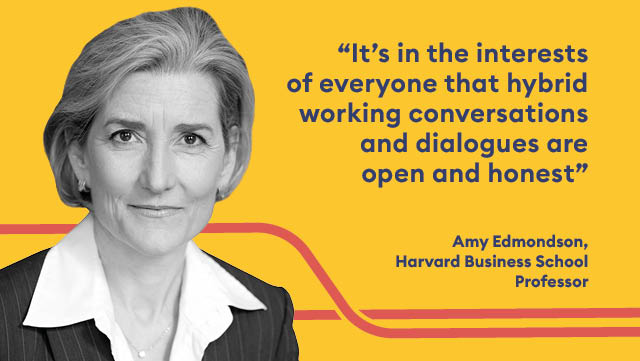
Having a sense of psychological safety is vital for these conversations to be productive.
Read Professor Amy Edmondson's five strategies for successful “hybrid” working conversations to develop your approach to these conversations.
Deloitte Insights also cites shifts in workforce composition as a growing challenge. Alternative work arrangements can make many workers feel they may not formally ‘belong’ to the organisation they work for. This can make it harder for them to feel a sense of belonging at work, and also more difficult for people in traditional work arrangements to feel a sense of unity with them.
While workforce technology enables instantaneous communication with virtually anyone, the way people use that technology can – paradoxically – contribute to increased feelings of isolation. Many virtual workers cite loneliness as one of the challenges of remote working.
The gradual return of in-person work alongside virtual, home-based workspaces means organisations need to find ways to increase connectivity and a sense of belonging, regardless of where their employees are located.
By creating a genuine culture of belonging, everyone wins. Employees who have a strong sense of belonging will feel more loyal to their employer and more engaged with their work. Conversely, those who don’t feel they ‘belong’ are more likely to look for a new job elsewhere.
A 2019 study by BetterUp found that workplace belonging can lead to an estimated:
The study also found that a single incident of ‘micro-exclusion’ (words or actions that spring from conscious or unconscious bias and make someone feel excluded; for example, because of their gender, ethnicity, race or income status) can lead to an immediate 25% decline in an individual’s performance on a team project.
Deloitte identifies three main factors that influence an organisation’s ability to enhance an employee’s experience of belonging:
Organisational culture is the system of values, beliefs and behaviours that shape how work gets done. A culture that encourages workers to be their authentic selves, own their uniqueness and share their perspectives without any fear increases the sense of belonging.
Creating a workplace culture where everyone, regardless of their background, feels they belong can be a positive way to both motivate staff and manage organisational change.
A lack of belonging can present a real challenge for staff recruitment and retention, but by building a culture of belonging, you can galvanise support for your approach to diversity, equality and inclusion (DE&I). As organisations explore ways to meet commitments to racial equity and justice, closing these belonging gaps will help retain and engage employees of all backgrounds.
Deloitte Insights identified that while organisational efforts to foster belonging have historically focused on ways to make individuals feel respected and fairly treated in an inclusive work environment, leading organisations are now forging a stronger link between belonging and organisational performance by strengthening workers’ connections with their teams and fostering their sense of contribution to meaningful shared goals.
Belonging, along with wellbeing, is one of the most important human capital issues. In a 2020 survey for Deloitte’s Human Capital Trends report, 79% of respondents said that fostering a sense of belonging in the workforce was important to their organisation’s success, and 93% agreed that a sense of belonging drives organisational performance.
Diversity is about the mix of different people in your organisation, while inclusion considers whether people feel a sense of belonging; whether they feel heard and have a safe space to express themselves authentically.
Steven Huang, in an SHRM blog, states that the three concepts of belonging, diversity and inclusion are linked and need to coexist.
While both culture and values are important to businesses, they are not the same.
Stanley Bergman, CEO at Henry Schein, explains that values never change, but culture, which is the way we implement our values, constantly adapts and changes with the times.
The values that guide business decisions at Henry Schein have always included integrity, honesty, ethical behaviour and respect for the dignity of others. Culture can include our approach to teamwork, co-operation, speed, persistence and overcoming adversity.
Culture describes the environment of an office, department or business. Many of us are in roles working to help our companies create and sustain healthy cultures, where employees feel valued, supported and motivated. By generating a sense of community, positivity and belonging in the workplace, companies can boost productivity, reduce turnover and improve morale.
Factors that can influence an organisation’s culture include:
A company's values are the guiding principles that inform decisions, actions and behaviours. Most organisations have a set of core values used to inform leadership, employees and customers about their beliefs, commitments and priorities. Values can have a direct impact on a company’s culture because culture is often an expression of the company’s values.
With clear values, we can help communicate the goals for our organisation and help employees understand the motivators behind decisions.
A climate of psychological safety means that employees feel comfortable asking for help, making suggestions or challenging the status quo without fearing negative consequences.
It is both a climate and a shared belief which lays the foundation for every member of your team to bring their whole selves to work and be truly inclusive and innovative.
Amy Edmondson, professor of leadership at Harvard Business School, explains: “Psychological safety is a belief that one will not be punished, or humiliated for speaking up with ideas, questions, concerns or mistakes.”
Organisations with a culture of psychological safety are more likely to be innovative and adapt well to change.
Psychological safety can lead to healthier, more productive and more inclusive workplaces. Employees have a sense of dependability in one another, role clarity, and motivation to tackle difficult problems and work hard.
Hive Learning offers four top tips to build psychological safety in your workplace:
1. Be vulnerable, be human, it starts with you
2. Actively build a safe environment
3. Reframe failure
4. Destigmatise feedback
Having a strong company culture is vital for success. But culture is not fixed. It constantly evolves and it is HR’s responsibility to guide that evolution. How is culture impacted by the HR function?
HR professionals have a key role in helping to develop a sustainable organisational culture.
HR coaching of C-suite members towards a positive and consistent leadership style can ensure that culture is genuine and role modelled by senior management.
Susanne Braun, professor in Leadership at Durham University Business School
Listen to her insights in our ‘Hybrid working: How is the new normal changing leadership and talent attraction?’ podcast.
The CIPD advises six ways that HR can influence organisational culture.
The Future Talent Learning Transformational Leadership Programme is like a mini-MBA (without the air miles). It’s 100% virtual and delivers against two management apprenticeships, so it can be funded through your Apprenticeship Levy. Clever right?
There can often be a gap between the existing culture in an organisation and the ‘desired’ culture needed to advance your company’s goals. Everyone is responsible for cultivating the desired culture, but there may be different roles and contributions to the process. So how does culture affect management in an organisation?
In Harvard Business Review’s February 2021 edition, the roles and responsibilities for culture that staff at different levels of the organisation should take on were identified:
Ben McCormick, writing for Raconteur, has a slightly different perspective. He states that HR must own culture and help align it to business strategy.
He explains that while it is crucial for the board to define the cultural changes needed to accelerate any shift in strategy, HR can play a key role in measuring, analysing and communicating culture in the wider business.
HR can provide the data that allows the board to see not only how the existing culture aligns with strategy but also what progress is being made in building the strategy or transformation-enabling culture that the organisation wants to achieve.
Historically, handling organisational culture has been passed to HR functions that have not had the data, resources or sufficient influence to properly measure and manage it. Now, as one of the most important human capital issues of our time, corporate culture sits firmly at the top of the boardroom agenda.
Bridget Miller, writing in HR Daily Advisor, has some practical suggestions for how HR can help strengthen organisational culture:
All organisations may strive to achieve a healthy culture, yet many fall short. This can result in high turnover and a poor reputation. With the current challenges in attracting talent, employers are feeling the pressure to enact positive culture change.
A healthy corporate culture offers more than just a great place to work. Culture can define the success of an organisation. Policies, practices and people are central to developing an ideal work environment – and when this is in place, the benefits are higher productivity, increased revenue and a healthier, more engaged workforce.
A healthy corporate culture is often defined as one in which values and behaviours are consistently lived across an organisation and people enjoy working. A healthy organisation focuses on employees’:
LSA Global identifies eight characteristics of a healthy corporate culture:
Rhonda Gardner, writing for the Academy to Innovate HR, says the following measures can indicate the quality of your culture:
Comparably News recommends just three culture metrics you should track:
1. Diversity, equity and inclusion (DE&I)
2. CEO score
3. Net Promoter Score (NPS)
Culture shapes the working lives of your employees, and it is also a strong driver of overall productivity. So how can workplace culture improve business performance?
A productive culture enables strong relationships between employees and the company, and it also supports a positive brand reputation. Employees are increasingly aware of the reputation and practices of their employer and are looking for productive work for an organisation that genuinely delivers on ESG factors (environmental, social and governance).
Employees are more likely to be fully engaged and keen to succeed when they are working for a company whose values they share and whose practices they believe in.
So, culture is strongly linked to overall productivity because it shapes the relationship between staff and customers, among employees, and between the workforce and the company’s board and senior management.
When employees feel empowered, valued, and proud of their organisation, they will be more productive.
As all HR professionals are acutely aware, the talent market remains highly competitive. Organisations need to focus on retention like never before.
Kwame Kwei-Armah OBE, British actor, playwright, director, singer and broadcaster, draws parrels between his work in the theatre and discovering new talent with the work of HR professionals.
Note: If you are able, we strongly encourage you to listen to the audio of this video. Transcripts and closed captions are generated using speech recognition software and may contain errors. Please check the corresponding audio before quoting in print.
HR and the theatre share a common need to identify new talent and the potential within your pre-existing team.
Both professions are driven by the desire to find the next 'big star', the person that will contribute to the world and serve a bigger purpose. That person has the potential to create organisational evolution and change.
Katie Burke of HubSpot describes five factors that can transform your current organisational culture into one that attracts new talent and motivates employees to stay:
Make your rhetoric match your reality. Sites such as Glassdoor and Comparably are now becoming part of every routine job search, with 86% of job seekers saying that they examine reviews as part of their research. It takes less than two minutes for a candidate to identify real-time feedback from existing employees. So, it is vital to ensure that your external brand matches your internal one.
The future is flexible. Employees are not just looking for hybrid or remote working options; they want flexibility in their entire work experience. Traditional 9-to-5 office-based work disappeared during the pandemic. Employees seek the ability to work from home, take vacations and structure their days and schedules in ways that work for their family. Without a commute, many employees are more focused and engaged during working hours.
Think beyond compensation. A sense of personal accomplishment and the potential for career growth outpace compensation as a driver for retention. Compensation does matter, but other factors weigh in, such as learning and development opportunities, and a clear link between company mission and individuals’ work.
Embed diversity, inclusion and belonging in your retention plans. It’s not enough to just think about broader retention strategies. You also have to think about retaining under-represented groups holistically, particularly women, parents, BAME groups and individuals with disabilities. Companies are moving from intention to impact and thinking about diversity as a critical part of their retention strategy. Part of that is putting as much attention on retention and growth opportunities for under-represented groups as you do on recruiting them to join your company.
Listen to what people want versus the reality that’s easier for you. People can feel disillusioned if they feel unheard. There is no one-size-fits-all solution to managing culture in a hybrid world. You have to be willing to challenge your own assumptions about what people want and be open to what employees are telling you.
To give another example, Mark Pearson, senior director, talent and organizational capabilities, at Advanced Micro Devices, explains AMD’s approach:
Mark Pearson, senior director, talent and organizational capabilities at Advanced Micro Devices
He goes on to say that ‘diversity’ connotes statistics and requirements while ‘belonging’ implies attachment and connectedness: “We believe ‘belonging’ is what every employee desires in a workplace,” he explains. “Driven by this thinking, we have renamed the Diversity and Inclusion (D&I) group at AMD the ‘Belonging and Inclusion (B&I) team’.”
A healthy company culture keeps employees engaged and invested by creating an environment that encourages people to do their best work. Culture influences everything from your daily processes to your top-level strategic decisions, affecting brand identity, employee engagement, retention and recruitment.
Culture is unique to each organisation and can be defined as the overall values, behaviours and priorities that can motivate employees to achieve organisational goals.
Employee engagement is a quantifiable measure of the health of a company’s culture and its effectiveness. Engagement shows whether and how your culture is impacting on your workforce. It is the level of connection, motivation and commitment an individual feels for their workplace.
The key to establishing a strong culture lies in ensuring that your company priorities and those of your employees are aligned.
There are three clear measures of highly engaged employees:
So, how can a high level of engagement be achieved?
In healthy cultures, the value of all employees is understood. Great organisations see people with valuable skill sets and know how to make the best of them.
Writing in Industry Week, leadership experts Jay Richards and Meredith Grzyb explain that we all have more in common about what engages us than we might think. Leaders need to make sure they are providing a great culture to facilitate engagement, which then makes a company become an attractive place to work. They identify the four aspects of culture that drive engagement:
1. There is a clear mission that gives meaning and direction to work. People want to be part of something meaningful, with purpose and direction. This is where leadership of a great workplace culture can make all the difference.
2. Leaders and managers ‘practise what they preach’. People want to work for people they respect. They want a boss who is fair, approachable and treats employees with respect. High performing cultures build leadership and they do it through respect.
3. Everyone believes they can have a positive impact. They want to know that what they do in the company matters. Letting people be a part of the company purpose and direction builds engagement. Strong cultures enable people to feel connected to the success of the organisation. Wins are celebrated and the culture enables learning from losses. Employees can talk honestly about company culture and ways they believe that their organisation can be improved.
4. Leaders set goals that are ambitious but realistic. People like to work in a company that is proactive. It is often said that one of the key attributes of a company is how well teams come together during a crisis. A better measure is how well people come together to prevent any future crisis. Is there an effective continuous improvement programme?
In many companies, there may be up to five different generations within the workforce.
It can be hard to understand the perspectives and experiences of those who are much younger or older than we are. This can lead to people using harmful stereotypes rather than working to understand differences in a constructive way.
Managers leading multigenerational teams are presented with opportunities and challenges when trying to create a shared culture that is fair and collaborative.
According to Emma Waldman, writing in Harvard Business Review, each generation will exhibit unique personality traits and values. It is important to remember that people are individuals but that generations do share certain characteristics on the whole.
Waldman explains that to realise the benefits and power of a generationally diverse workforce, managers can lead the way in learning how to collaborate and appreciate unique preferences, habits and behaviours.
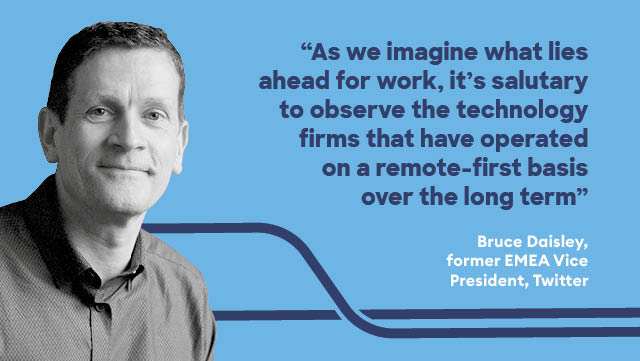
Hybrid working has become the norm for the majority of organisations. However, it's worth noting that this has been the norm for many, including those who work in tech. Learn from their working practices to find out how to balance remote and office working, trust, autonomy and responsibility.
The Chartered Management Institute also argues that hybrid working is best practice because it has led to improvements in productivity and even in financial results.
But hybrid working brings additional challenges for managers seeking to build or maintain trust and a shared culture.
Writing in The HR Director, Richard Peachey, a consultant with workplace relationships specialists CMP, says:
“The most obvious challenge for HR and managers generally is around what hybrid does to workplace relationships.”
Hybrid working often means many conversations involve both staff in a meeting room and others joining remotely via a video call. This can lead to a very different experience for the participants. A report by RingCentral found that nearly half of employees struggled with group work during the pandemic period; more than half felt their employer did not make significant attempts to help them collaborate remotely.
Few organisations have found a perfect formula for office dynamics – one that ensures there are no clashes in personality, niggling grievances or conflicts. The best employers deal with the inevitable day-to-day challenges by building a culture of trust.
If people trust their manager and their employer to listen, then they can be open about their concerns and have real conversations about their situation. This can help prevent any difficulties escalating and avoid formal processes or disciplinary action.
But hybrid working means less face-to-face contact, and the rapport needed for trust and openness can be undermined.
HR teams can help with new ways to build a culture of trust that works in this new context. Peachey suggests:
A healthy company culture is not just about the numbers; it’s about fully appreciating and accepting those that might be different.
Elizabeth Grace Becker, tech recruiter at Capital One, writing about healthy company cultures, explains that “unhealthy company culture hires to fit quotas. This creates an environment where employees question a new hire’s ability, and new hires wonder if they were hired because of merit or to fill a diversity target. No one wants to be hired simply to pad statistics.
Elizabeth Grace Becker, tech recruiter at Capital One
A recent article in Essence argues that building a culture of belonging is at the heart of DE&I. It explains that building a culture that not only promotes, but also propagates, DE&I goes hand in hand with building a culture of belonging. A sense of belonging can act as a catalyst to making DE&I successful. Only when people feel that they belong, are valued and secure enough to be their authentic self can they truly value and encourage diversity and inclusion.
Writing in Harvard Business Review, Julia Taylor Kennedy, executive vice president at Coqual, and Pooja Jain-Link, executive vice president at Coqual state that to make the changes needed to achieve promises of racial justice, equity and inclusion, organisations require all hands on deck – at every level of the company.
They say that widespread support on any effort can be difficult to garner, especially when it comes to DE&I work. An essential part of this is to create a culture where every employee, regardless of their background, feels they belong.
According to research by Coqual, it is said someone belongs at work when they are seen for their unique contributions, connected to their co-workers, supported in their daily work and career development, and proud of their organisation’s values and purpose.
While a lack of belonging is the challenge, especially for people from BAME communities, building it is a crucial strategy for healing – and for galvanising support of all DE&I work. As organisations map ways to meet their commitments to racial equity and justice, closing these ‘belonging gaps’ will help them join employees in a common mission – and to retain and engage employees of all backgrounds.
As all HR professionals know only too well, one of the most important challenges as a manager is hiring. Often, we may follow the popular trend of thinking that the best hire is the best culture fit.
However, due to the ongoing ‘war for talent’, more businesses are shifting to consider internal talent development first.
Prioritising learning and development can significantly boost employee engagement and build a strong sense of ‘belonging’. Employees feel more valued by and a greater loyalty to an employer who invests in their career development opportunities.
According to Harvard Business Review by focusing on internal-talent-developing strategies before casting the net wider for their next team members, recruiters and hiring managers are benefiting from cost savings, efficiencies and better employee engagement.
Research published in Harvard Business Review shows that external hires take longer to adapt to their role and can have higher rates of voluntary and involuntary exit than internal hires.
Developing the skills and talents of existing employees means those individuals are more able to hit the ground running in a new role within the company and will become productive more quickly. This is due in part to their understanding of organisational culture, making them better able to navigate the politics of the business. They are also more likely to be loyal and committed to the company for the long term.
External hires are also shown to be more costly, with one study finding external candidates to be 18% more expensive than those developed internally. Building a sustainable talent pipeline aids succession planning.
The current workforce is the most age-diverse ever. It is now common for organisations to have employees from up to five different generations. The presence of multiple generations expands the pool of available talent.
As mentioned earlier, the different generational groups can be broadly defined as:
Andrea Boatman, writing for the Academy to Innovate HR, explains that employees are usually keen to expand their skills and advance their careers, and this is not limited to younger workers.
Upskilling and reskilling can be encouraged not only through formal training, but also through knowledge sharing between generations. You might consider peer mentoring and learning, sponsorship, or assembling cross-functional teams.
Some employees will adapt easily to new technologies, and others may want more in-depth training.
The more diverse a team is, the more ways there are for people to interact and learn from each other’s insights. This can include mutually beneficial mentoring opportunities. People with more years of experience can advise younger employees on career development.
Conversely, the recent trend of reverse/cross-generational mentoring allows more junior employees to educate mature workers on current trends and technology.
The knowledge and strengths that each generation offers can be retained and shared to help your organisation better prepare for future needs. HR leaders can help ensure that knowledge stays within the organisation in an internal talent pipeline.
Retaining workers has been just the first step to sustaining businesses in the post-COVID-19 world.
To protect productivity, innovation and creativity we must continue to engage and stimulate our talent, supporting people to adapt, collaborate and remain mentally healthy. Safeguarding their sense of belonging and connection is core to achieving this.
We also need to future-proof our organisations so that they can respond and thrive in this new, uncertain world.
Future Talent Learning has been in development over the past couple of years as a result of extensive conversations with HR directors, heads of talent, and heads of learning and development.
Many employers have expressed the need for:
They add that “if that could be funded via the Apprenticeship Levy, so much the better”.
Apprenticeships are open to anyone aged 16 or over who is not in full-time education. It’s also important to note that apprenticeships – and the Apprenticeship Levy – can be used for existing employees as well as new hires. In fact, many businesses are now investing in apprenticeships to help existing employees gain industry-standard skills.
Future Talent Learning’s Transformational Leadership Programme is designed to fit this brief entirely, allowing you to offer your managers and entry-level talent world-class, highly engaging, fully immersive online learning to nurture the mindsets, behaviours and capabilities they need to become better leaders.
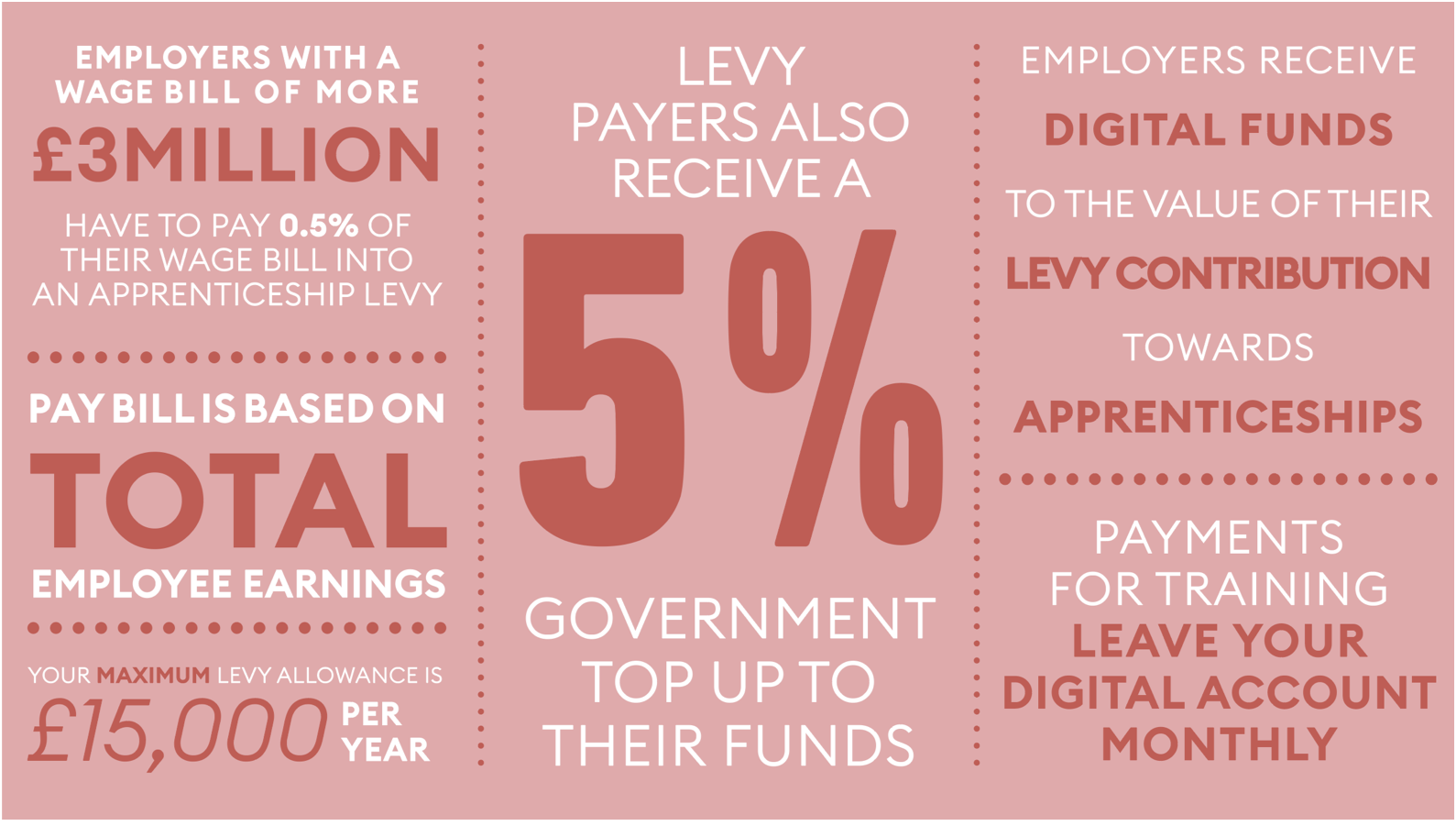
The levy enables employers of all sizes to secure extra funds to improve the quality and quantity of the apprenticeships they offer.
The Apprenticeship Levy allows employers to embed lifelong learning in their managers through management development programmes that result in a Level 3 or Level 5 management apprenticeship qualification. With the levy, these courses are effectively cost-free.
Our own levy-funded Future Talent Learning leadership and management courses are a prime example, with clients and partners including Marks & Spencer, Costain, ASDA and many more forward-thinking organisations.
Want to read the full article at your leisure or share it with a colleague?
Enter your details and download.
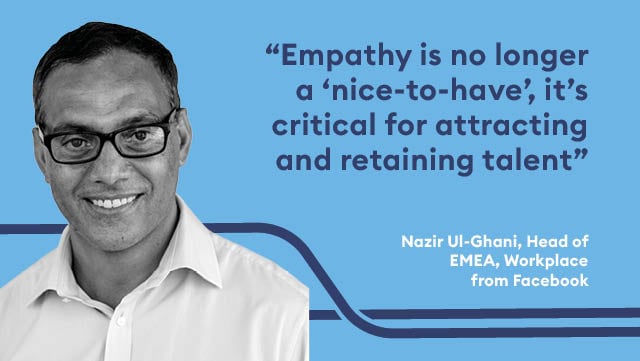
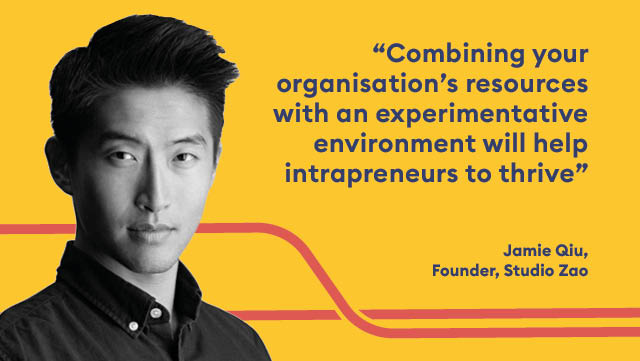
Discover how we can help you reimagine online learning to upskill your workforce.

Discover how we can help you reimagine online learning to upskill your workforce.



Change Board Holdings Limited,
trading as Future Talent Learning,
Main Apprenticeship Training Provider
UKPRN 10084912